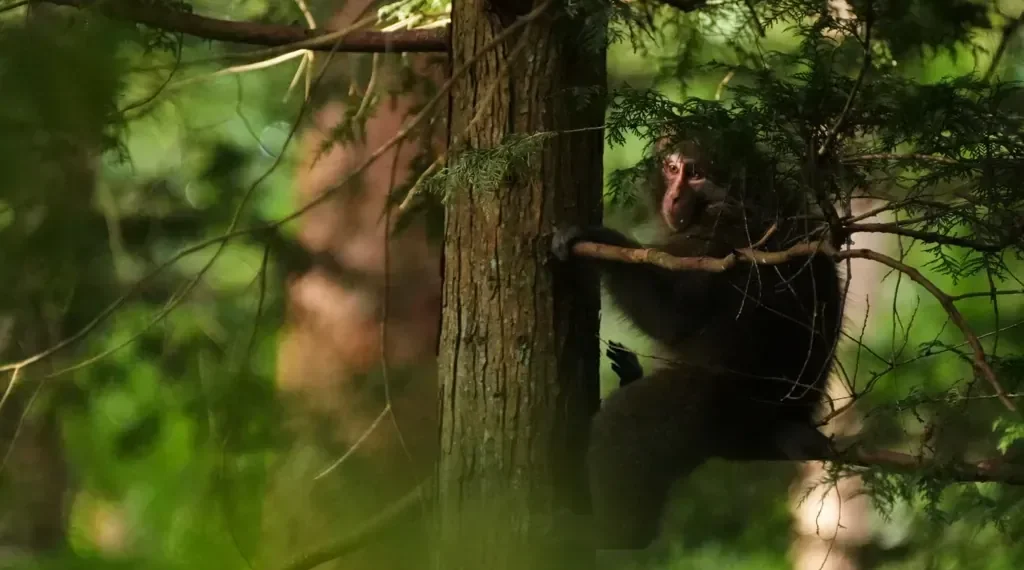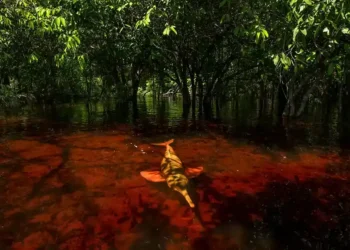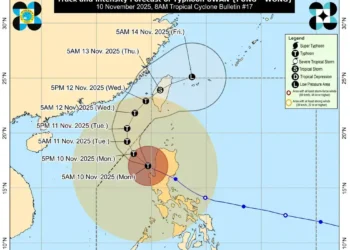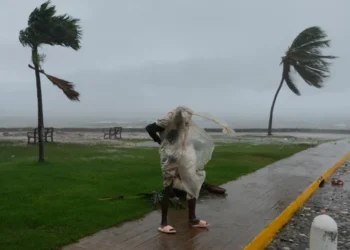Azumino Residents Combat Monkeys Encroaching on Homes and Farms in Japan’s Northern Alps
In Japan’s Northern Alps, residents are grappling with an unusual yet persistent challenge: wild Japanese macaques venturing into villages and farmland. As the monkeys increasingly raid homes, steal food, and damage crops, local authorities and volunteers are stepping up efforts to keep the animals in the mountains, balancing public safety with conservation concerns.
Despite their popularity with tourists at destinations like Jigokudani Monkey Park—where more than 200,000 visitors a year observe macaques bathing in hot springs—the monkeys are often unwelcome neighbors in communities such as Azumino city.
The Monkey Chasing Squad in Action
In Azumino, a team known as the Monkey Chasing Squad patrols the foothills, employing GPS trackers, radios, whistles, and walking sticks to herd monkeys back into the mountains. Wearing bright orange vests, the roughly 50 part-time civil servants coordinate to monitor and manage the macaque population, estimated at around 600 individuals within city limits.
“Naturally, the food in the village is more nutritious and tastier,” said Masaya Miyake, leader of the squad. “We’re just returning them to where they’re supposed to be. They’re not simply being mischievous; they’re just coming down to eat.”
The squad’s work has shifted the macaques’ habits: previously, nearly all monkeys lived within the town, but today about half remain in the hills—a change both Miyake and city officials attribute to the program’s efforts.
Bold: Human-Monkey Conflicts and Public Opinion
The crop damage caused by macaques is modest compared to losses from deer, boars, and crows, but it remains significant. Japan’s Agriculture Ministry reported in 2022 that wild animals—including monkeys—caused 15.6 billion yen ($100 million) in crop damage, with macaques contributing to roughly 70% of these losses alongside deer and boars.
While some residents call for culling, opinions are deeply divided. Takumi Matsuda, an Azumino local and wildlife observer, documents monkeys in their natural habitat, sharing images and videos on Instagram to foster appreciation for the animals’ behavior. “In Japan today, opinions have become polarized between ‘don’t kill a single one’ and ‘kill them all,’” Matsuda said. “I oppose the wasteful taking of life and want effective measures so we don’t have to keep killing monkeys forever.”
The Risks and Limits of Culling
Despite calls for culling, experts warn that removing entire monkey groups can exacerbate the problem. Ecologist Shigeyuki Izumiyama of Nagano’s Shinshu University explains that when troops are removed, neighboring groups move in, while smaller groups may venture deeper into farmland searching for food.
“Part of the issue is that legislators don’t have enough time and are being asked to produce quick results,” said primate researcher Takayo Soma of Kyoto University. “But ecology doesn’t work that way. Macaques live about 20 years, so we need to take a long-term approach.”
Azumino City Councilman Yoichi Tsujitani noted that removing macaques entirely from human-adjacent areas could take two to three years. “A quick, painless death by someone skilled is the last kindness we can offer,” he said, reflecting the ongoing tension between humane treatment and practical management.
Alternative Strategies for Coexistence
Beyond chasing, residents employ multiple non-lethal strategies. GPS tracking, decibel meters, and electric fences help monitor and deter macaques from venturing into farmland. Apple farmer Kazuo Matsuda installed electric fencing to protect his orchard, though he acknowledged the high maintenance costs.
Dogs have also proven effective in discouraging monkeys, according to retired teacher and Monkey Chase Squad member Shigeru Maruyama. “When people chase them, the monkeys just taunt us,” said Takahiro Isomoto, who trains dogs to ward off wildlife including monkeys, boars, and deer.
Even with these efforts, macaques demonstrate remarkable adaptability. At a forest shrine, Miyake’s squad briefly stopped to rest, only to see the monkeys return within minutes to observe the humans from above. “Now it’s almost the opposite — like we’re the squad that doesn’t chase monkeys,” Miyake joked.
Finding Balance Between Wildlife and Human Needs
Japan’s macaques have protected status since 1947, established to rebuild populations after extensive hunting during World War II. Residents, local authorities, and researchers continue to explore ways to manage the growing interactions between humans and wildlife.
Experts emphasize that sustainable solutions require patience, scientific monitoring, and community cooperation. As Michael Johnson, a retired English professor and local resident, recounted after multiple raids on his home: “They didn’t get into the bourbon,” he said, highlighting both the nuisance and resilience of these primates.
The challenge in Azumino illustrates a broader issue for communities living alongside wildlife: balancing cultural appreciation, conservation ethics, and practical measures to protect homes, farms, and public spaces.
This article was rewritten by JournosNews.com based on verified reporting from trusted sources. The content has been independently reviewed, fact-checked, and edited for accuracy, tone, and global readability in accordance with Google News standards.
Stay informed with JournosNews.com — your trusted source for verified global reporting and in-depth analysis. Follow us on Google News, BlueSky, and X for real-time updates.
JournosNews.com follows Google News content standards with original reporting, verified sources, and global accessibility. Articles are fact-checked and edited for accuracy and neutrality.










